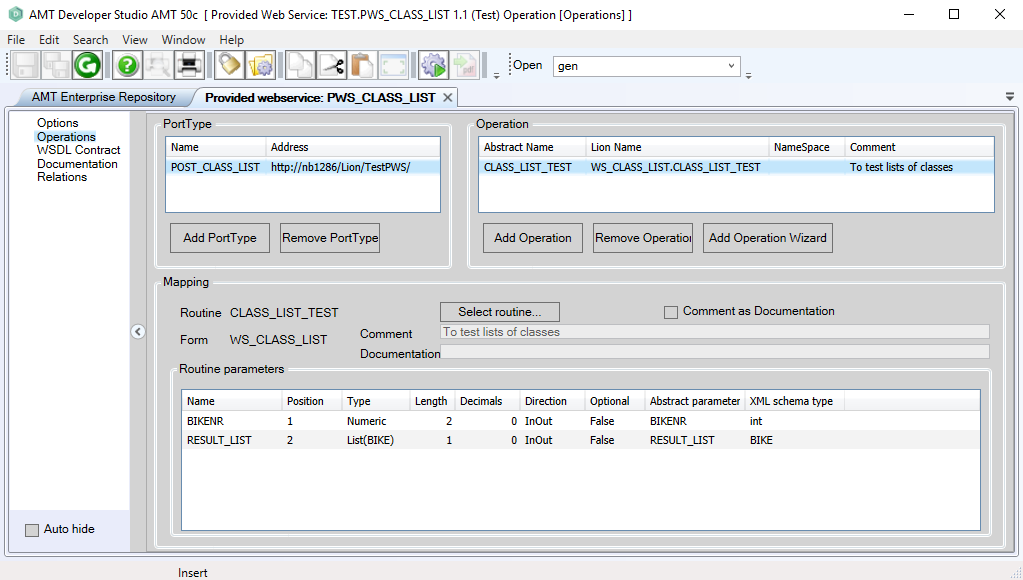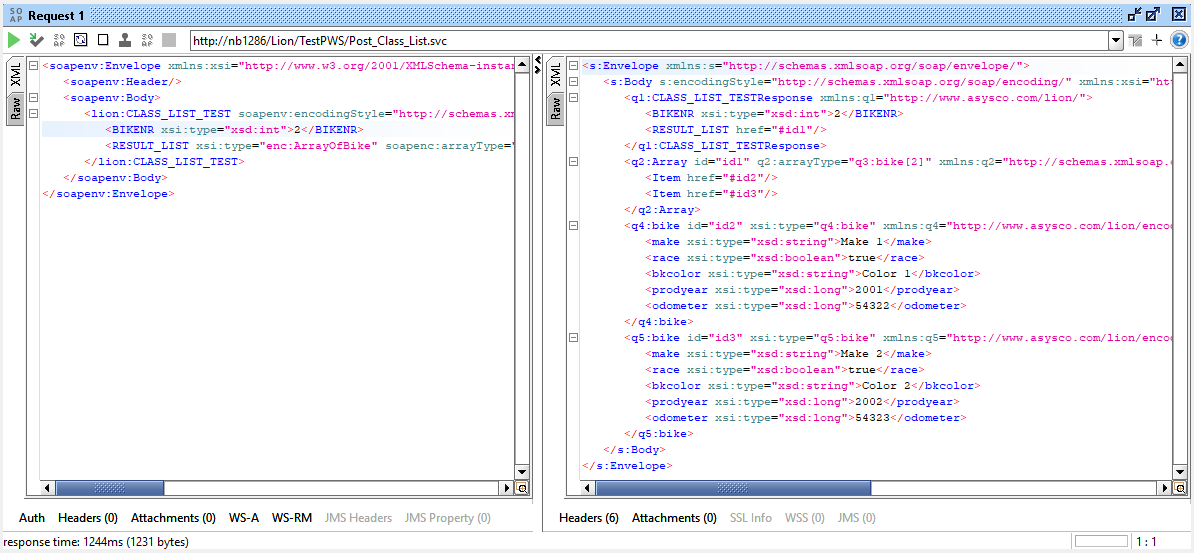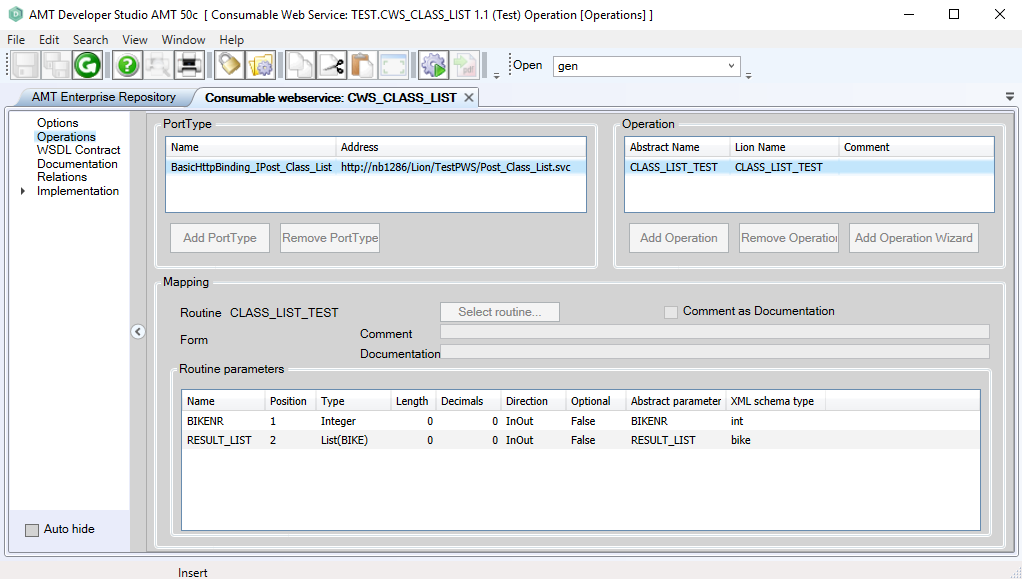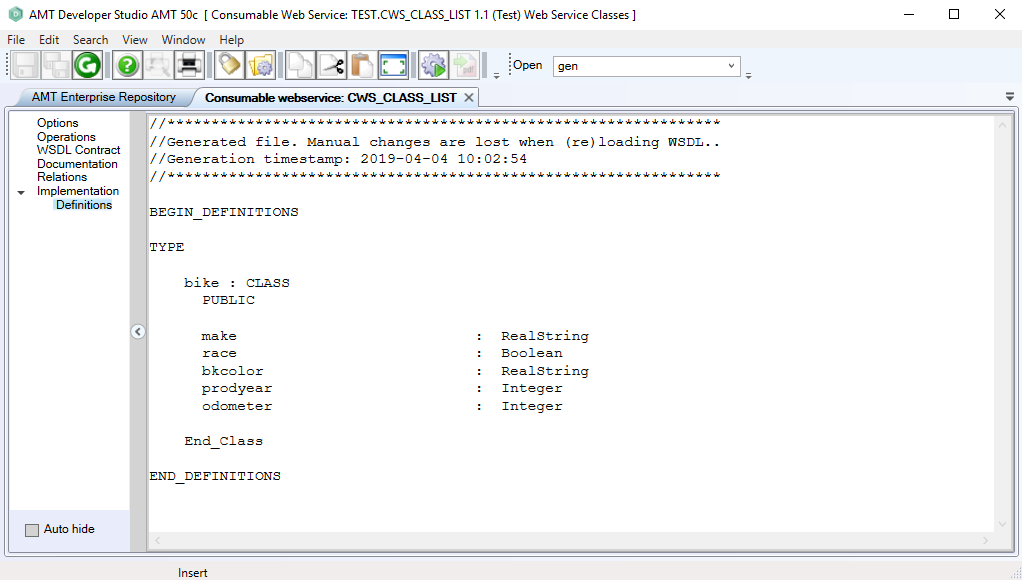List of Classes Web Services
The use of Classes in Web Services will be explained using the Class 'bike' already defined in the help pages Usage of Classes and Lists of Classes.
Provided Web Service for a List of Class Instances
Provided Web Service Routine
As example the following Provided Web Service routine is created in a Web Service enabled Form:
var
ibike : bike
i : integer
begin_routine
if bikenr < 1
exit
endif
loop for i := 1 to bikenr
ibike := bike.create()
ibike.make := 'Make ' + format(i)
ibike.race := true
ibike.bkcolor := 'Color ' + format(i)
ibike.prodyear := 2000 + i
ibike.odometer := 54321 + i
result_list.add(ibike)
endloop
end_routine
It takes an input of the number of bike instances to add in the list (bikesnr) and will return a list with bikesnr bike instances using the list variable result_list to the Provided Web Service.
| Until AMT 84 'classes' and 'lists' as a routine result parameter were not supported for use with Provided Web
Services. Only 'classes' and 'lists' as var defined parameters were supported for use with Provided Web Services. With the release of AMT 84 both 'lists' and 'classes' are supported as routine results including for use with Provided Web Services. |
Creating the Provided Web Service
From this routine a new Provided Web Service can be created using the normal procedure as shown in the Web Services help pages.
|
It is important that the options in the Provided web service are set to the following values when using lists in web services: SOAP Default style: Document Default use: Literal |
The resulting Operations view will look like the example below.

The returned type for the list should be the Class type and the length will be 1. The Provided Web Service can now be generated and configured in the Provided Web Services web.config and the appropriate <PortType>.ini file.
Testing the Provided Web Service
The Provided Web Service can then be tested using Soap UI as shown below. Best is to import the WSDL into Soap UI using the Web Service itself. The only input needed is the number of instances in the list (bikenr) that should be returned.

Returned is an array containing all the Field members values of the Class Instances as shown above.
Consumable Web Service for a List of Class Instances
Creating the Consumable Web Service
For the consumable web service, the previously created list of class instances provided web service example will be used in the same way as shown in the Web Services help pages. The resulting Operations view will look like the example below.

Just like the single class consumable web service, a list with a different class type than the original list of class instances will be created from the provided list of class instances. This is a local class definition in the Consumable Web Service object, which can be viewed in the Implementation > Definitions menu option.

This local class can be used in other objects to create an instance of it, which can then be filled by a call to the consumable web service.
Consumable Web Service Report
In a report this could look like the following example:
const
var
bicyclenr : integer
bicycle : cws_class_list.bike
bikelist : list (cws_class_list.bike)
i : numeric 2
booleans
end_definitions
routine main
begin_routine
bicycle := cws_class_list.bike.create()
bicyclenr := 3
cws_class_list.basichttpbinding_ipost_class_list.class_list_test(bicyclenr, bikelist)
loop for I := 1 to bikelist.count
bicycle := bikelist[i]
sme (bicycle.make, bicycle.bkcolor)
endloop
end_routine
